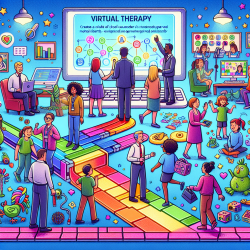Understanding the Connection Between OSA and Nocturia
Obstructive Sleep Apnea (OSA) is a condition that affects millions worldwide, characterized by repeated episodes of partial or complete obstruction of the airway during sleep. This often results in disrupted sleep and excessive daytime sleepiness. A lesser-known symptom associated with OSA is nocturia, the frequent need to urinate during the night. Recent research has highlighted the potential of uvulopalatopharyngoplasty (UPPP) as a treatment for both OSA and nocturia.
Research Insights: UPPP and Its Impact
The study titled "Polysomnography and Nocturia Evaluations after Uvulopalatopharyngoplasty for Obstructive Sleep Apnea Syndrome" provides a comprehensive analysis of how UPPP can affect nocturia in OSA patients. The research involved 103 patients diagnosed with OSA, divided into groups based on the presence of nocturia. The study found that UPPP significantly reduced nocturia frequency in patients, even when the surgery was not entirely successful in reducing the Apnea-Hypopnea Index (AHI).
Key Findings for Practitioners
- UPPP can effectively reduce nocturia episodes in OSA patients, enhancing their quality of life.
- The reduction in nocturia was observed even in cases where UPPP did not meet the criteria for surgical success in terms of AHI reduction.
- There was no direct correlation between AHI reduction and nocturia frequency, suggesting multifactorial influences on nocturia beyond just airway obstruction.
Implications for Clinical Practice
For practitioners, these findings underscore the importance of considering UPPP as a treatment option for OSA patients who also suffer from nocturia. The surgery not only addresses airway obstruction but also contributes to better nocturnal urinary patterns, potentially improving overall sleep quality and daytime functioning.
Encouraging Further Research
While the study provides valuable insights, it also highlights the need for further research to understand the mechanisms behind UPPP's effects on nocturia. Practitioners are encouraged to contribute to this growing body of knowledge by considering nocturia outcomes in their surgical assessments and sharing findings with the wider medical community.
To read the original research paper, please follow this link: Polysomnography and Nocturia Evaluations after Uvulopalatopharyngoplasty for Obstructive Sleep Apnea Syndrome.










